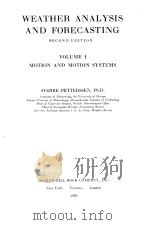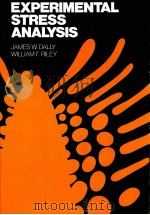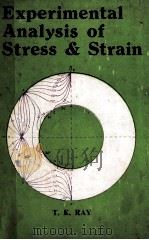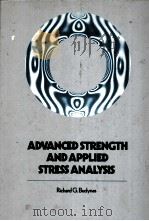《Experimental Stress Analysis and Motion Meassurement》
| 作者 | 编者 |
|---|---|
| 出版 | 未查询到或未知 |
| 参考页数 | 515 |
| 出版时间 | 没有确切时间的资料 目录预览 |
| ISBN号 | 无 — 求助条款 |
| PDF编号 | 811445588(仅供预览,未存储实际文件) |
| 求助格式 | 扫描PDF(若分多册发行,每次仅能受理1册) |
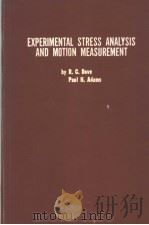
PART ⅠEXPERIMENTAL STRESS ANALYSIS1
CHAPTER 1.STRESS ANALYSIS BY STRAIN MEASUREMENT3
1-1Introduction3
1-2 Mechanical strain gages5
1-3 Optical strain gages9
1-4 Electrical strain gages13
1-5 Grid techniques18
1-6 Moiré fringe method21
1-7 Brittle coatings for strain indication31
1-8 References listed in Chapter 142
1-9 Problems43
1-10 Suggested laboratory experiments47
CHAPTER 2.VARIABLE-RESISTANCE STRAIN GAGES50
2-1Gage characteristics and types50
2-1a Gage factor51
2-1b Gage materials54
2-1c Method of gage construction and gage style-metal gages57
2-1d Method of gage construction and gage style-semiconductor gages63
2-1e Grid-backing materials67
2-1f Gage-bonding materials69
2-1g Mounting,wiring,moisture-proofing,and checking techniques71
2-2Circuitry for resistance strain gages76
2-2a Circuit analysis—metal strain gages77
2-2b Circuit analysis—semiconductor gages94
2-2c Calibrating strain-gage circuits98
2-2d Balancing strain-gage circuits103
2-2e Temperature compensation of strain-gage circuits106
2-2f Effect of leads,switches,and slip rings in strain-gage circuits117
2-2g Use of alternating current to power strain-gage circuits124
2-3 References listed in Chapter 2129
2-4 Problems130
2-5 Suggested laboratory experiments143
CHAPTER 3.INDICATING AND RECORDING EQUIPMENT FOR RESISTANCE STRAIN GAGES150
3-1Introduction150
3-2Indicators and multichannel recording equipment for static strains151
3-2a Unbalanced bridge systems151
3-2b Balanced bridge systems156
3-2c Reference bridge systems157
3-2d Constant-current strain indicators161
3-2e Multichannel recording systems163
3-3Equipment for recording dynamic strain166
3-3a Recorders utilizing galvanometers170
3-3b Recorders utilizing cathode ray oscilloscopes174
3-3c Magnetic tape recorders178
3-4 Telemetry systems191
3-5 References listed in Chapter 3193
3-6 Suggested laboratory experiments193
CHAPTER 4.SOME SPECIAL PROBLEMS ENCOUNTERED IN THE USE OF RESISTANCE STRAIN GAGES195
4-1Introduction195
4-2Unusual environments and applications196
4-2a Strain measurements over long periods196
4-2b Moistureproofing strain gages201
4-2c Strain gages subjected to nuclear radiation203
4-2d Strain measurements at high temperatures205
4-2e Strain measurements at low temperatures214
4-2f Magnetic effects215
4-2g Strain measurements at high pressures215
4-2h Measurement of strains on low-modulus materials and/or on thin sections217
4-2i Measurement of large strains221
4-2j Measurement of cyclic strains223
4-2k Measurement of transient strains225
4-2l Thermal-stress studies227
4-2m Measurement of strains at interior points232
4-3Additional special problems(abstracts and references)233
4-3a Use of strain gages on nonmetallic materials233
4-3b Use of strain gages in medical research236
4-3c Use of strain gages to measure residual stresses238
4-3d Use of strain gages in the construction of transducers239
4-4 References listed in Chapter 4240
CHAPTER 5.REDUCTION OF STRAIN-GAGE DATA242
5-1Introduction242
5-2 Effect of transverse sensitivity243
5-3Computing stresses from measured strains251
5-3a Rectangular rosettes252
5-3b Delta rosettes261
5-3c Two-element,90-degree rosettes262
5-3d Rosettes made from single-element gages265
5-3e Stress gages266
5-4 Summary272
5-5 Appendix A(Methods for determining transverse sensitivity)273
5-6 Appendix B(Stress-strain gage corrected for transverse sensitivity of the individual elements)280
5-7 References listed in Chapter 5281
5-8 Problems281
5-9 Suggested laboratory experiments285
CHAPTER 6.STRESS ANALYSIS BY PHOTOELASTICITY287
6-1Introduction287
6-2 Optical theory289
6-3 Stress-optical relationships297
6-4 Equipment and models303
6-5Static-stress analysis308
6-5a Two-dimensional model techniques308
6-5b Three-dimensional techniques322
6-6 Dynamic-stress analysis323
6-7 Thermal-stress analysis328
6-8 References listed in Chapter 6329
6-9 Problems332
6-10 Suggested laboratory experiments336
CHAPTER 7.STRESS ANALYSIS BY PHOTOELASTIC COATINGS338
7-1Surface-coating techniques338
7-2 Photoelastic strain gages347
7-3 References listed in Chapter 7355
7-4 Problems355
7-5 Suggested laboratory experiments358
PART ⅡMOTION MEASUREMENT361
CHAPTER 8.MEASUREMENT OF DISPLACEMENT,VELOCITY,AND ACCELERATION362
8-1Introduction362
8-2Motion measurement using a reference363
8-2a Measurement of displacement363
8-2b Measurement of velocity379
8-3Motion measurement using force transducers380
8-3a Measurement of angular velocity and acceleration380
8-3b Measurement of linear acceleration382
8-4 References listed in Chapter 8385
8-5 Suggested laboratory experiments385
CHAPTER 9.MOTION MEASUREMENT WITH NO REFERENCE-SEISMIC SYSTEMS388
9-1Basic seismic theory388
9-1a Steady-state response389
9-1b Transient response395
9-2 Seismic instruments401
9-3Circuitry for piezoelectric accelerometers414
9-3a Sensitivity considerations414
9-3b Low-frequency response considerations417
9-3c System components423
9-3d System frequency response427
9-4 References listed in Chapter 9430
9-5 Problems431
9-6 Suggested laboratory experiments433
CHAPTER 10.ACCELEROMETER CALIBRATION435
10-1Introduction435
10-2 Constant-acceleration methods436
10-3 Sinusoidal-motion methods438
10-4 Transient-motion methods440
10-5 Calibration by comparison to a standard444
10-6 Other kinds of calibration446
10-7Accelerometer system calibration448
10-7a Accelerometers capable of DC response448
10-7b Piezoelectric accelerometers454
10-8 References listed in Chapter 10468
10-9 Problems469
10-10 Suggested laboratory experiments473
CHAPTER 11.ACCELEROMETER PROBLEMS,DIFFERENTIATION AND INTEGRATION475
l1-1Humidity and dirt475
11-2 Temperature effects476
11-3 Nuclear-radiation effects478
11-4 Acoustical sensitivity479
11-5 Zero shift with piezoelectric accelerometers479
11-6 Mounting techniques481
11-7 Effect of accelerometer’s presence on the acceleration measured482
11-8 Differentiation and integration of motion measurements487
11-9 References listed in Chapter 11496
11-10 Problems496
11-11 Suggested laboratory experiments503
INDEX509
《Experimental Stress Analysis and Motion Meassurement》由于是年代较久的资料都绝版了,几乎不可能购买到实物。如果大家为了学习确实需要,可向博主求助其电子版PDF文件。对合法合规的求助,我会当即受理并将下载地址发送给你。
高度相关资料
-
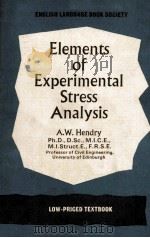
- ELEMENTS OF EXPERIMENTAL STRESS ANALYSIS
- 1968 THE ENGLISH LANGUAGE BOOK SOCIETY AND PERGAMON PRESS
-
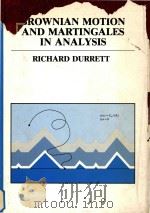
- Brownian motion and martingales in analysis
- 1984 Wadsworth Advanced Books Software
-
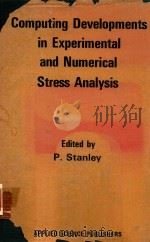
- COMPUTING DEVELOPMENTS IN EXPERIMENTAL AND NUMERICAL STRESS ANALYSIS
- 1976 APPLIED SCIENCE PUBLISHERS
-

- PRINCIPLES OF EXPERIMENTAL STRESS ANALYSIS
- 1954 PRENTICE-HALL INC.
-
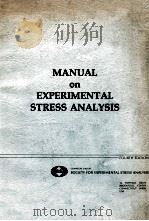
- MANUAL ON EXPERIMENTAL STRESS ANALYSIS FOURTH EDITION
- 1983 SOCIETY FOR EXPERIMENTAL STRESS ANALYSIS
-
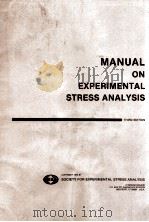
- MANUAL ON EXPERIMENTAL STRESS ANALYSIS THIRD EDITION
- 1978 SOCIETY FOR EXPERIMENTAL STRESS ANALYSIS
提示:百度云已更名为百度网盘(百度盘),天翼云盘、微盘下载地址……暂未提供。➥ PDF文字可复制化或转WORD


